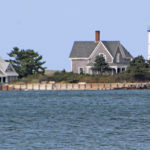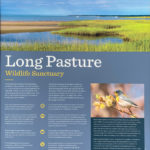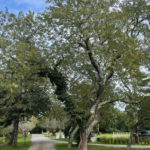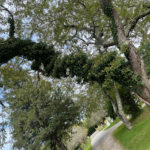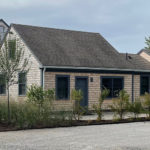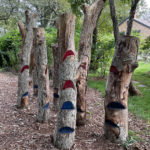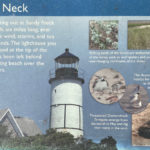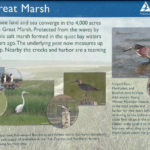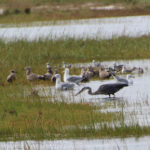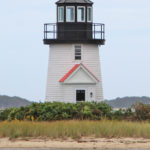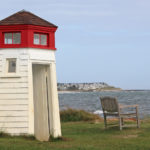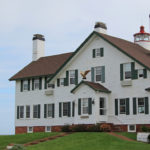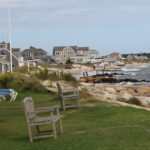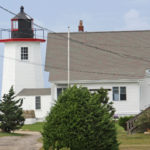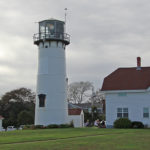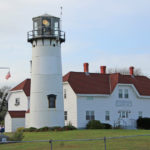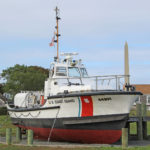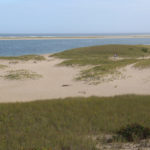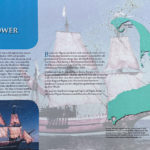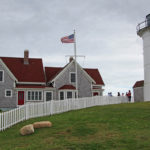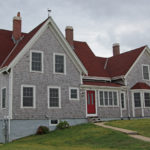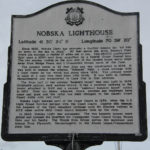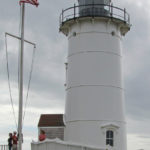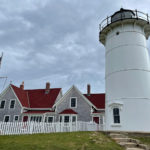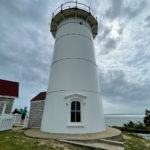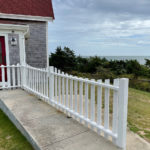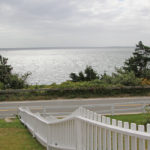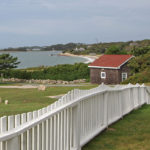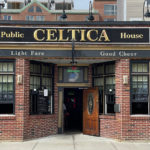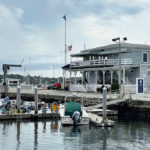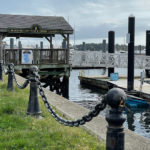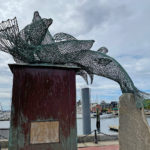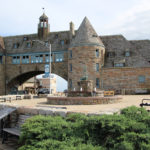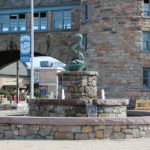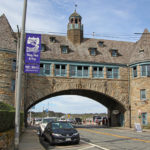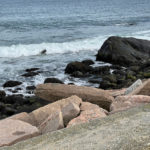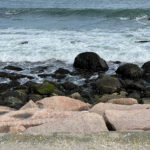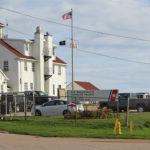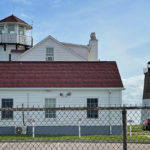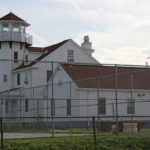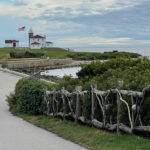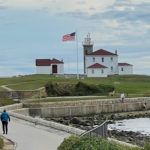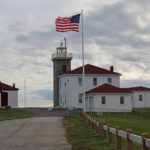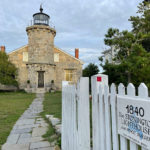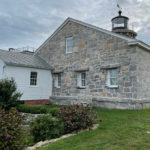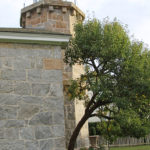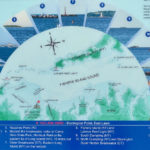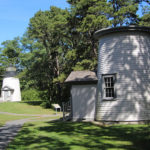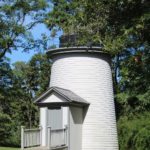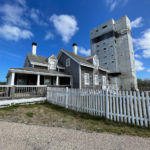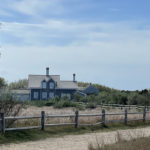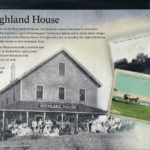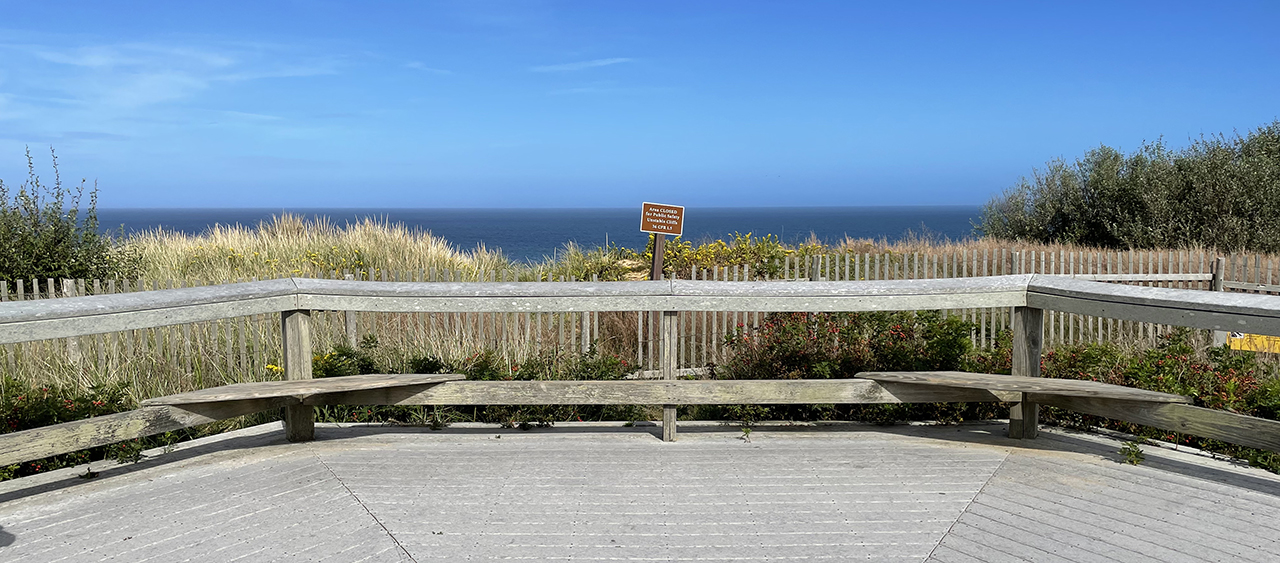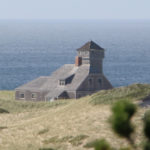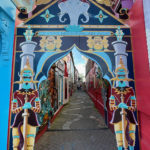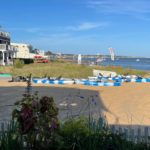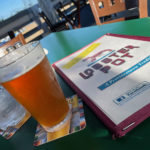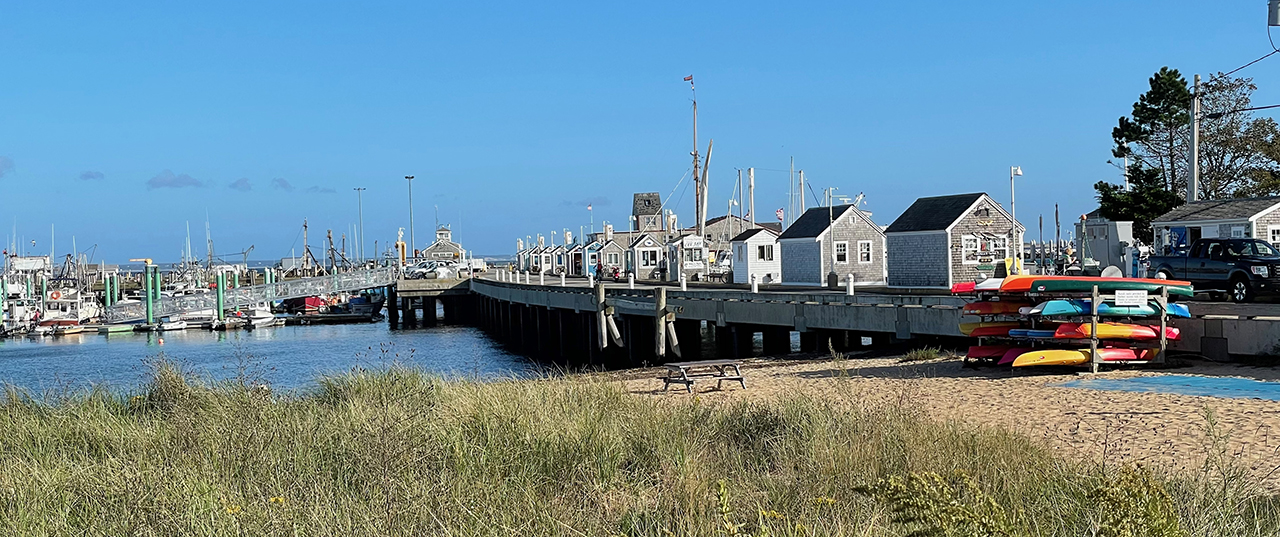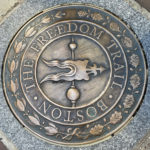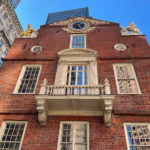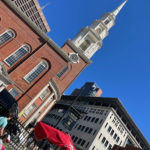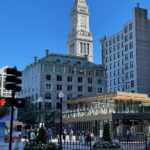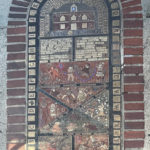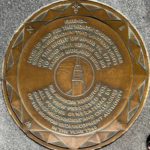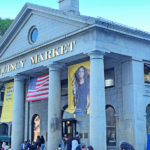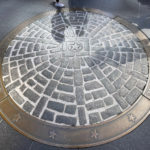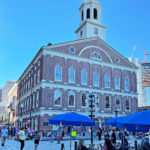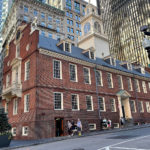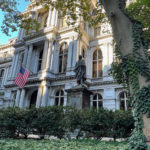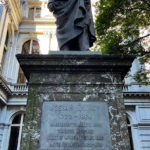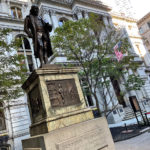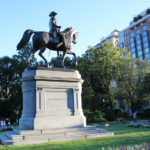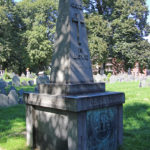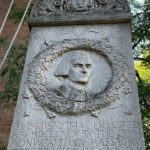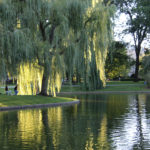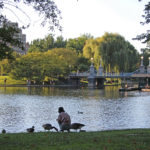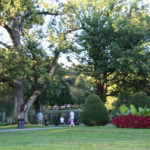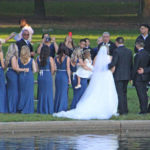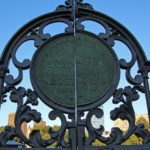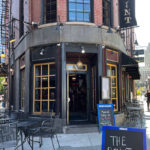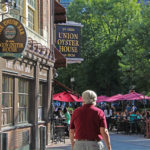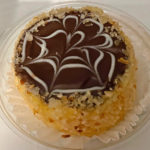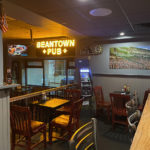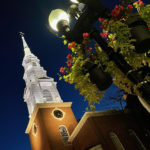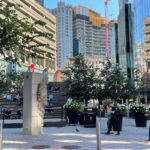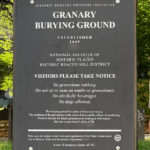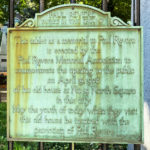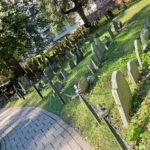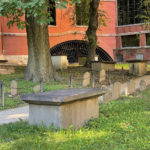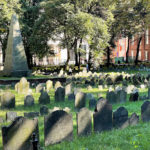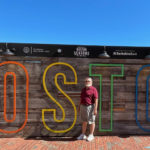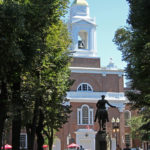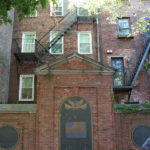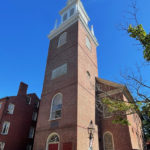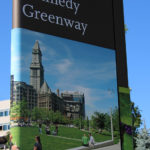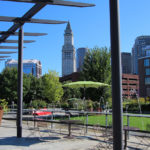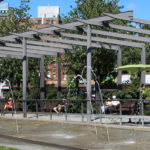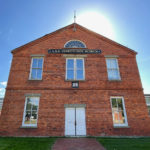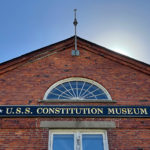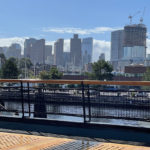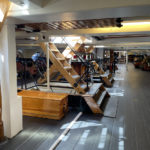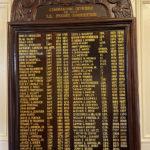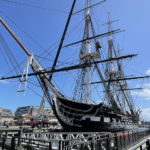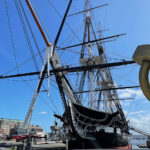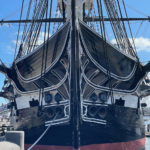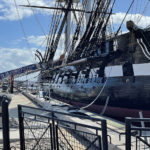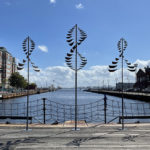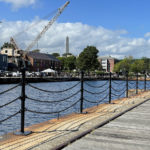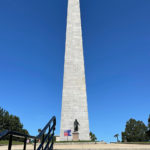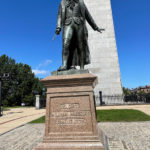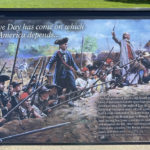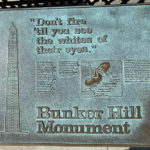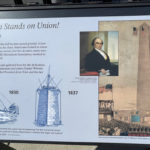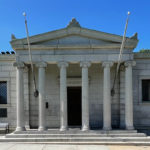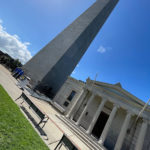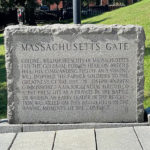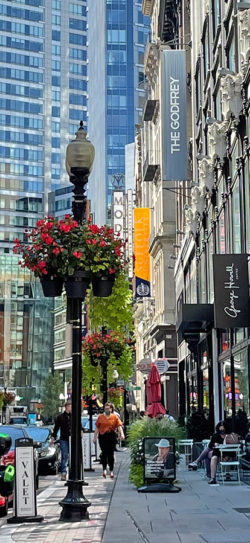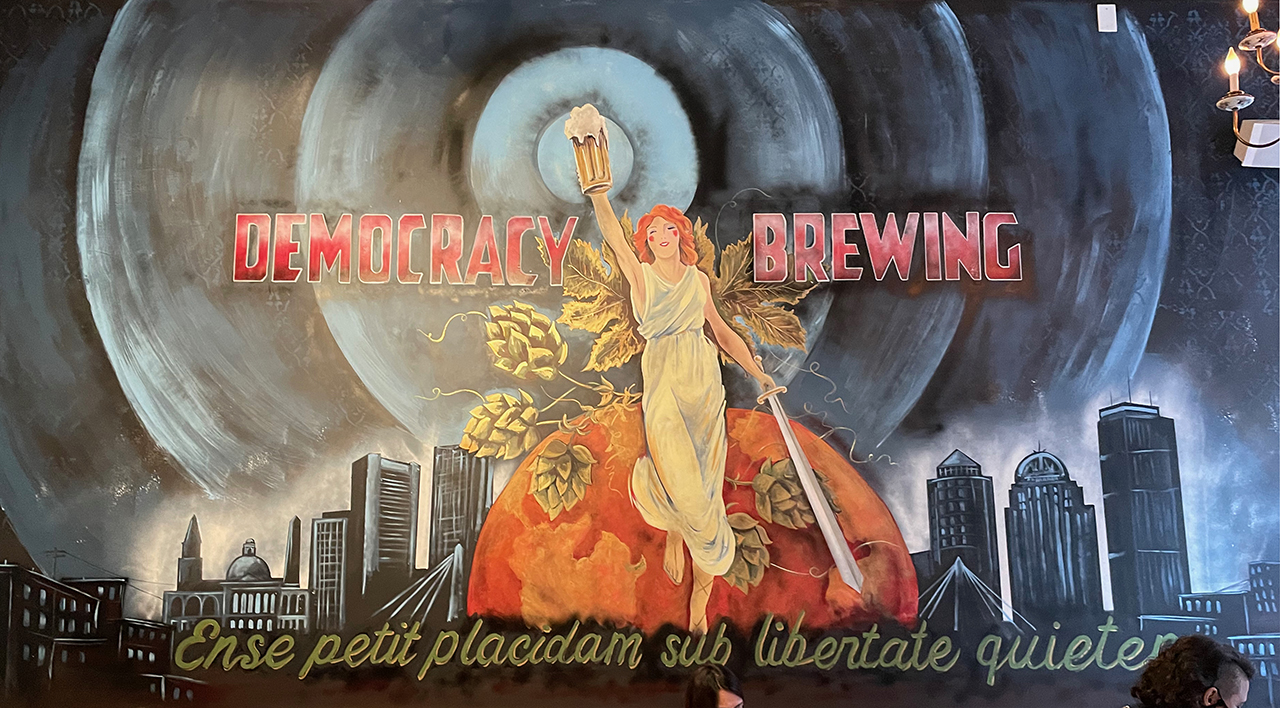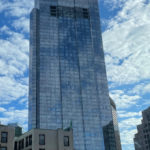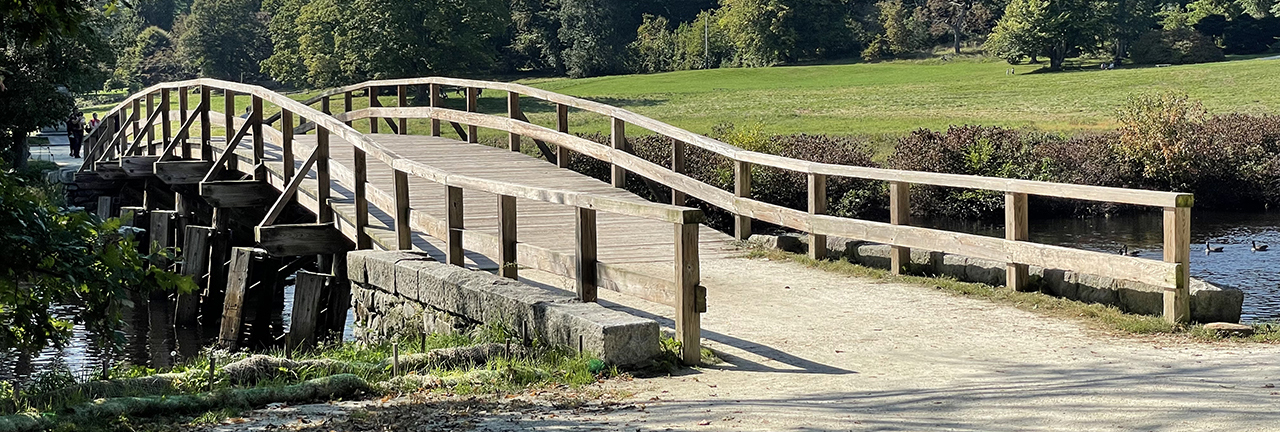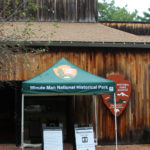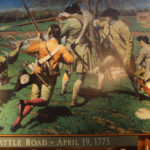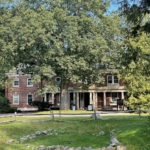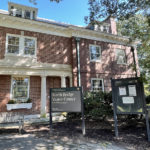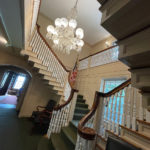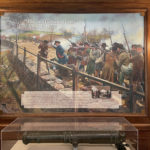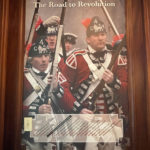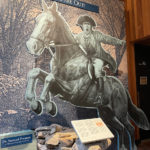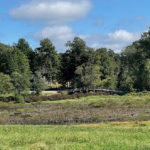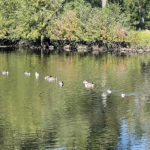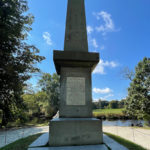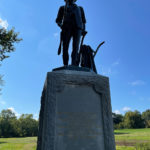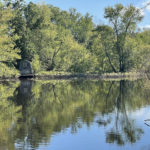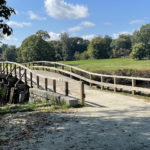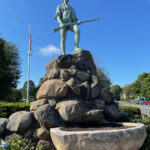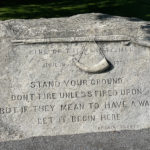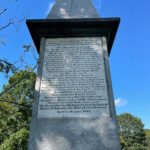If you were more than a little disappointed by the lack of lighthouses in my last post (especially since I called out a seeming abundance of them), then this is the post for you. We searched high and low and found some good ones, along with several “No Trespassing” signs and several that were just not there. Along with the lights came fantastic views and birds, and just a little more history. I love vacations!
Click on the first photo in each group and scroll to see the square photos at full size.
To start at the beginning of this series, visit Fall for New England 2021.
Cape Cod Continued
Today we started our quest for lights at Long Pasture Wildlife Sanctuary in Barnstable, MA. We thoroughly enjoyed the grounds of this place and once we reached the water’s edge, it was even better. It was a bit of a stretch to see the Sandy Neck Lighthouse across the harbor and houses were built right up to it, but it was still a very pleasant visit indeed.
“After Sandy Neck Lighthouse stood “headless” for nearly seventy-five years in spoiled beauty, volunteers were finally spurred to restore the lighthouse to its former glory. Looking now at the charm of this lighthouse flanked by its six-room keeper’s house and situated on the low, eastern point of Sandy Neck at the entrance to Barnstable Harbor, it is easy to forget the sacrifices of the men and two women (and their families) who tended this light during its century of service.
Sandy Neck comes by its name honestly, with shifting sands constantly redefining the margins of this thin, one-half-mile-wide, six-mile-long peninsula on the north side of Cape Cod. In the nineteenth century, Barnstable was an important port for fishing, whaling, and coastal trade, and Sandy Neck was home to a try-works for rendering whale blubber into oil.” ~ READ MORE
Don’t Get Too Close or Keep Out Altogether!
The Hyannis Rear Range Light, AKA the Hyannis Harbor Light (first photo below) was built in 1856 and its partner – The Front Range Light was added in 1885. The pair would guide ships into the Old Colony Railroad Wharf so they could unload their goods onto trains. Since they were not meant for navigation to ships way out at sea, they were only twenty-feet tall. When the water traffic was rerouted to another bay, the lighthouse was sold. It is now a private residence and closed to the public. The Front Range Light – along with the wharf – washed into the Sound.
I didn’t put two and two together to realize The Lighthouse Inn (next three photos) probably wouldn’t be what I was expecting. Today the “Inn” aspect of it definitely overshadows the “Lighthouse”. I felt like I was snooping as I shot some quick photos. Check out the specifics on their website and they have much better photos where you can actually see the old lighthouse with their ariel views (in the back behind the peak of the roof). The Inn does look beautiful and a fun place to stay, and its little lighthouse “shed” is pretty cute.
I’m going a little out of order with the final photo below to keep it under the “No Trespassing” header. Good thing I have a good zoom, because this was definitely marked as private property in a subdivision. Jim was not happy that I was getting close in although technically, I wasn’t trespassing – I was still outside the gate. I have no idea what the name of that one is, and… I gotta go!
Chatham Lighthouse
“The coastline of Cape Cod is rumored responsible for over 3500 wrecked vessels (1850 through 1980). Those who sailed close to the Chatham shores tell tales of ghostly images that lured ships to what seemed like, safety; only to have their hopes dashed against the rugged shores of the Cape.
In the days of old, the lighthouse was the only means of preventing a ship from running aground. The beacon emitted light like a giant flashlight, preventing ships from hitting the sharp rocks of the coast. The Chatham Lighthouse, also known as the twin lights prior to 1923, is one of 16 remaining lighthouses on the Cape Cod Coast.
The building of the lighthouse was no cheap endeavor, nor was it easy considering the sand. In the early years, merchandise took months to reach the American shores, and it took experienced sailors to bring it home, not to mention ships were precious and costly to build. This lighthouse was built with the same solid construction ships were given. Chatham Lighthouse was built to save cargo and lives.” ~ READ MORE
In an effort to distinguish this location from others nearby, two wooden towers were constructed – the first in 1806 and second in 1808. They were both resurfaced in stone in 1841. Even though they were built on moveable platforms, creating safer access for ships as erosion crept in, one of the towers fell into the sea. The second still shines today – all day, every day.
Today the Chatham Lighthouse property consists of the North Tower, a museum, and Coast Guard search and rescue. Also pictured below are sand dunes for miles, a shark warning and an interesting story about the MayFlower and how the treacherous waters of this location may have changed history. A detailed story of its journey and landing in Provincetown can be seen at the Pilgrim Monument and Museum in Provincetown.
The Scenic Route
As we make our way back west (home), today we are headed to an overnight in East Haven, CT. Although not a hotel we would recommend, our route checked off two boxes on our “states yet to visit” list (CT and RI) and took us to some of the most fabulous lighthouses of our entire trip! We started at Nobska Lighthouse, and if you check out the website, a renovation is almost complete. Soon the keeper’s house will become a Maritime Museum, which I’m sure will be top-notch!
A Pub with a View
After another lighthouse fail, we decided to stop at the wharf in Newport, RI at the Celtica Public House for some lunch. We totally live by one of the reviews at the link: “These are the small places with the easy going fun that we search out when we travel.” We had fish and chips and with my new Iowa friend cheering me on (in my mind), I tried my first Guinness (and liked it!). The wharf was absolutely beautiful despite the drizzle.
1886 Casino/Castle
We made a real quick stop in Narragansett, RI at The Towers because, well, they were awesome! They were preparing for some sort of event since folks were gathering who were dressed to the nines. If you have a special occasion you’d like to celebrate, check out the tab for Your Event. Let me know when you schedule and invite me (please?)!
“Narragansett Pier is home to the broad Town Beach, which is overlooked by the Towers, an iconic, castlelike remnant of an 1886 casino. Gift shops and eateries fill the Pier Marketplace, and Ocean Road is dotted with inns and seafood eateries.”
Point Judith Lighthouse
Next up was a nice walk along the shoreline with large, black rock – beautiful in contrast to the blue water and surf. The closer we got to Point Judith Lighthouse we noticed a high fence, then a U.S. Department of Homeland Security/Coast Guard Station sign. That’s usually not a good thing and a check on the website confirmed that while welcome on the grounds, inside the fence – not so much.
Located at the confluence of two waterways (Narragansett Bay, RI and Block Island Sound), this area has lots of water traffic. Even with active lighthouses, many ships have wrecked off of these coasts. The octagonal granite tower was built in 1856 and is the third on this site. The upper half was painted brown and the lower half white to make it more distinguishable during the day. Point Judith Light was automated in 1954, and was listed on the National Register of Historic Places in 1988.
Slumming It
When we pulled up to a (very) affluent neighborhood in Westerly, RI to see the Watch Hill Lighthouse, we assumed they wouldn’t let in the riff raff and there would be no trespassing signs like we had encountered in other spots, but NO! A sign read that walkers were welcome, and seniors 65+ could drive in! We decided to walk in for the exercise and so I could gawk at the gorgeous homes along the way, most of which looked empty. Boy, what a treat!
We parked along the street and ventured through the neighborhood. It was a pretty narrow road and we were glad that we didn’t drive in, especially when we met other cars that were traveling too fast. Some of the drivers were not 65 and breaking the rules, but who are we to judge.
As we approached the lighthouse I was simply amazed! Whether it was the log fence, lush greenery, the clouds in the (finally) blue sky, or the flag outstretched over that gorgeous lighthouse, this was my favorite stop of the entire trip. And it looks like it will be here for years to come:
“Per the terms of the National Historic Lighthouse Preservation Act (NHLPA) of 2000, Lighthouses deemed to be “excess to the needs of” the United States Coast Guard are to be conveyed to Federal Agencies, State [or] local governments, nonprofit corporations, educational agencies [or] community development organizations that agree to make the station available for education, park, recreation, cultural or historic preservation purposes for the general public.
As steward of the Watch Hill Lighthouse since August 31st, 1986, the Watch Hill Lighthouse Keepers Association (WHLKA) resolutely affirmed our intention to continue our Mission to preserve this beloved historic property in perpetuity. Our application highlights our immediate objective to maintain access to the Lighthouse grounds for public enjoyment, and to enhance the collection held and information provided by the Lighthouse Museum the Association maintains on the property. Equally, we continue to plan for anticipated building repairs and revetment restoration so that this beautiful public park space in Watch Hill may be safely enjoyed by all our visitors.” ~ READ MORE
Stonington, CT
The Stonington Lighthouse Museum is located in the Borough of Stonington, CT. This unique lighthouse was built in 1840 and could very well come in second place for my favorites on this trip. A well-preserved example of a mid-19th century stone lighthouse, Stonington was taken out of service in 1889 and now serves as a local history museum.
“For more than 170 years, this modest stone citadel — a lighthouse tower attached to a dwelling — has stood at the entrance to the harbor of Stonington, Connecticut’s only port facing on the Atlantic. Now regarded fondly as a durable symbol of a seafaring past, in its working years it performed the valuable service of guiding ships across treacherous Fishers Island Sound.
The building is notable among lighthouses of its period for its fanciful stonework, with ornamental cornices around the tower and weighty granite lintels above doorways and windows. When it was built in 1840 it had a nearly flat roof with simulated battlements, but it leaked so badly that two years later local craftsmen were called in to install the gabled roof it has today.” ~ for more info on Stonington, including an historic walking tour READ MORE
Wouldn’t you know it, the museum was closed for renovations, what a surprise! After a couple of quick pictures of this fantastic place, we walked down by the harbor to see the views. Turns out there’s a lot of things to see out in the distance from this spot (see the sign below) including the Watch Hill Lighthouse! I think we’ll need to revisit Stonington, take the walking tour and visit a few more lighthouses in this area.
Tomorrow’s a Drive Day
After three wonderful days in Cape Cod and a stupendous drive day en route to East Haven, CT, tomorrow we have to make some time to get to our next stop in Pennsylvania. I hope you enjoyed all the beautiful lighthouses and that’ll you’ll return for some Frank Lloyd Wright in the days (or weeks) ahead!!
Next up: All About Frank
Happy trails,
Barb

